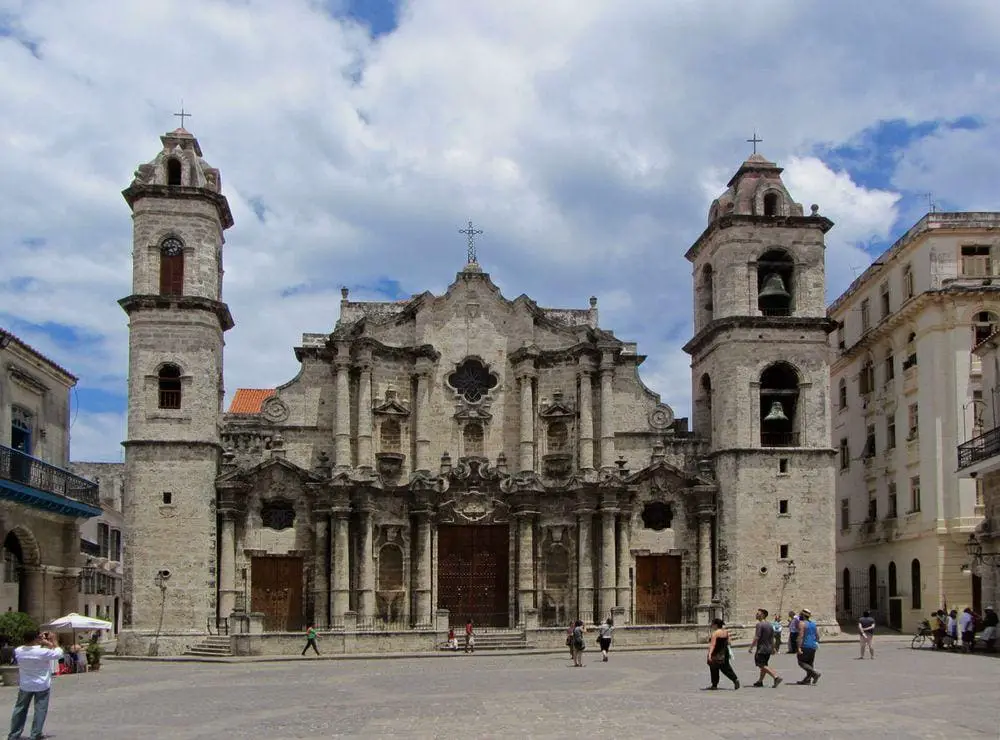Wondermondo 🢖 World 🢖 Wonders of North America 🢖 Wonders of the Caribbean 🢖 Wonders of Cuba
Territory
Wonders of Cuba
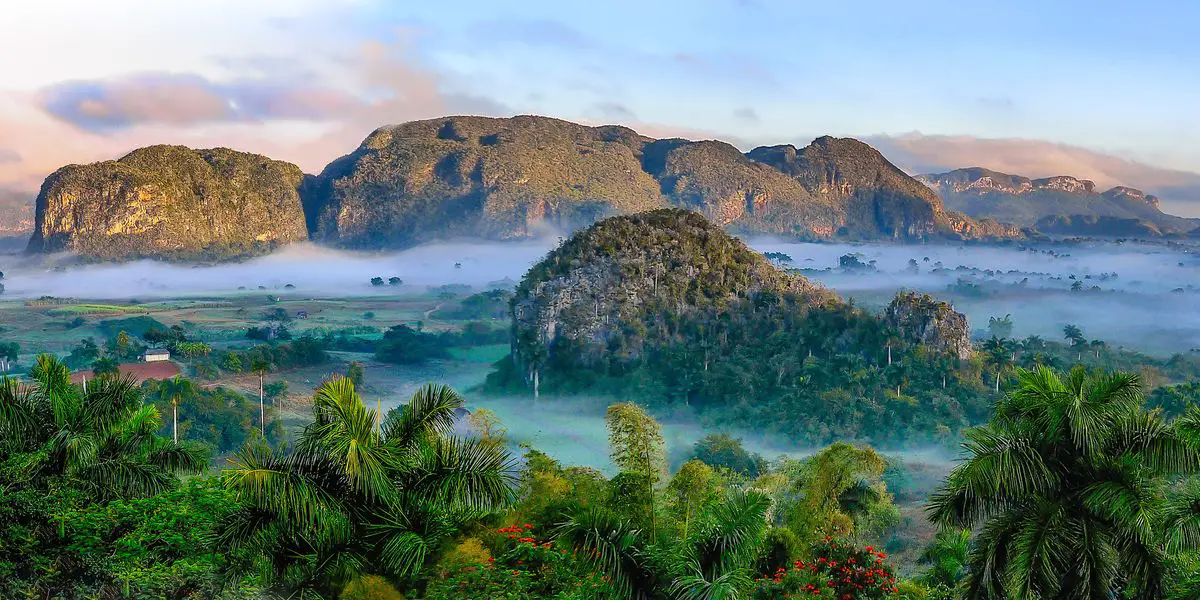
 Highlights
Highlights
This largest island in Caribbean offers many surprising landmarks. Here is pristine rainforest, giant caves, historical cities, and unusual petroglyphs. The most amazing wonders of Cuba are:
- Biodiversity. In several locations around the country have evolved unique species of plants and animals, forming interesting ecosystems. Some (such as Ciénaga de Zapata) are too large and fall outside the scope of Wondermondo, but there are smaller unique ecosystems, such as El Yunque, Mogotes de Jumagua, and the fantastic marine terraces of Maisí and Cabo Cruz.
- Caves. The longest caves in Cuba are more than 50 km long. Martin Infierno Cave contains the largest known stalagmites in the world – up to 67.2 m tall!
- Historical cities. Several Cuban cities belong to the most interesting historical cities in the Americas. True jewel is the beautiful Trinidad, Camagüey was specially planned as a maze to disorientate the pirates and – well, Old Havana would make any European country proud.
- Metropolitan architecture in Havana. The magnificent buildings in Havana testify to the affluence of Cuba in the late 19th – early 20th century. This Caribbean metropolis has a very special charm and such buildings as El Capitolio, Great Theatre, or Bacardi Building form a magnificent background to the street life of this amazing city.
Map with the described wonders
If you see this after your page is loaded completely, leafletJS files are missing.
 Top 25 wonders of Cuba
Top 25 wonders of Cuba
Geological wonders
Martin Infierno Cave
Cienfuegos
Cave with the tallest stalagmite in the world. This fantastic cave formation is 67.2 metres tall. Two other stalagmites are 45 and 35 m tall. Cave is 793 m long, 179 m deep, it has also unique, enormous gypsum flowers and fossils of extinct mammals.
Bellamar Cave
Matanzas
Very old (300 000 years), 23 km long cave.
Marine terraces of Maisí
Guantánamo
It is possible that these are the most prominent limestone marine terraces in the world. Here is a rugged coast with several impressive marine terraces starting under the sea and rising up to 460 m above sea level. Terraces contain unique ecosystems with many endemic species of plants and animals. Some of the most exotic are the large, colorful land snails of Polymicta genus.
Cueva de los Portales
Pinar del Rio
A beautiful cave that starts in a natural arch that has been shaped by a river that cuts through the mountain. During the Cuban Missile Crisis in 1962 here lived Che Guevara – it was considered that he could lead the revolution after the potential American bombing.
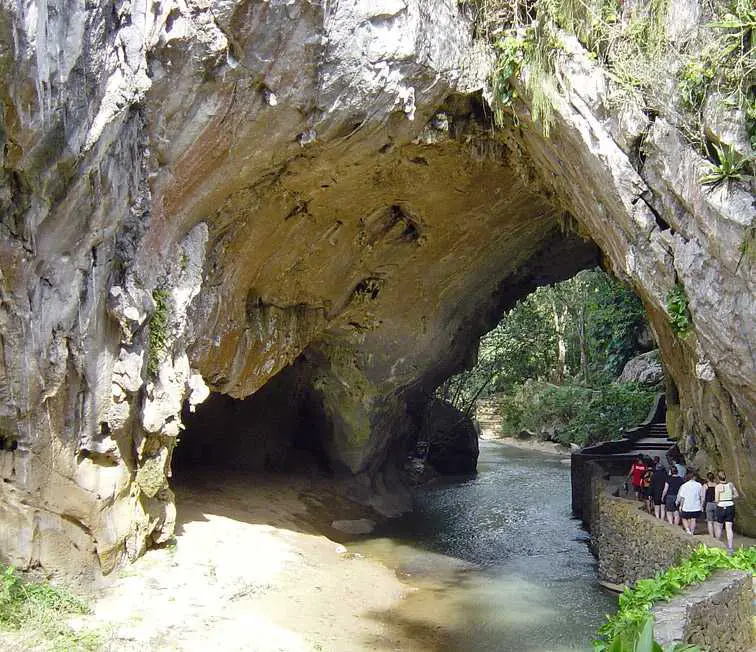
Marine terraces of Cabo Cruz
Granma
Some of the most prominent limestone marine terraces in the world – a rugged coast with several impressive marine terraces starting at 180 m depth under the sea and rising up to 360 m above the sea level. Terraces contain unique ecosystems with many endemic species of plants and animals.
Gran Caverna de Santo Tomás
Pinar del Rio
One of the largest known caves in Cuba, the explored length of passages is 46.2 km. Cave has beautiful speleothems, including gours.
Río Jauco Canyon
Guantánamo
Spectacular, up to 300 m deep canyon with limestone cliffs, covered with pristine rainforest.
Gran Caverna Majaguas-Cantera
Pinar del Rio
21.127 km long cave system.
Biological wonders
Mogotes de Jumagua
Villa Clara
Group of 8 forested limestone hills. These hills have served as a refuge for numerous species of plants and animals not met anywhere else. In the hills have formed caves. Interesting endemic species is Thrinax ekmaniana – a spectacular palm, some 100 trees remaining. A site of many legends.
Archaeological wonders
Cueva de Punta del Este, Francés
Isla de la Juventud
A beautiful cave, partly under the water. Contains amazing petroglyphs – elaborate spirals, presumably made by Ciboney culture.
Cueva de Pichardo
Camagüey
A beautiful cave with up to 17 m long stalagmites. Taino people have lived here and left amazing petroglyphs.
El Guate Caves (El Guafe)
Granma
A group of ceremonial and funerary caves. Amazing is Idolo del Agua – a stalagmite with a carved face rising from the water in one of the caves.
Cueva de los Petroglifos
Pinar del Rio
A unique cave with prehistoric cliff art in four techniques – made with soot, incised, incised over soot, and drawn with carbon.
Patana Cave
Guantánamo
A cave in the limestone marine terraces. In the cave are nine idols that have been carved in stalagmites. Around the cave are located more archaeological monuments.
Architecture wonders
Old Havana
La Habana
A center of the Caribbean metropolis, established in 1519. The best-preserved large historical city in the Americas. The enormous historical center of the city has a huge number of valuable buildings in Baroque, Neo-Classicism, Eclecticism, Art Nouveau, and Modern styles. Buildings have retained their original details of wrought iron and wood. Old Havana has many impressive places but one of the best-known is Malecón – one of the most picturesque promenades in the world.
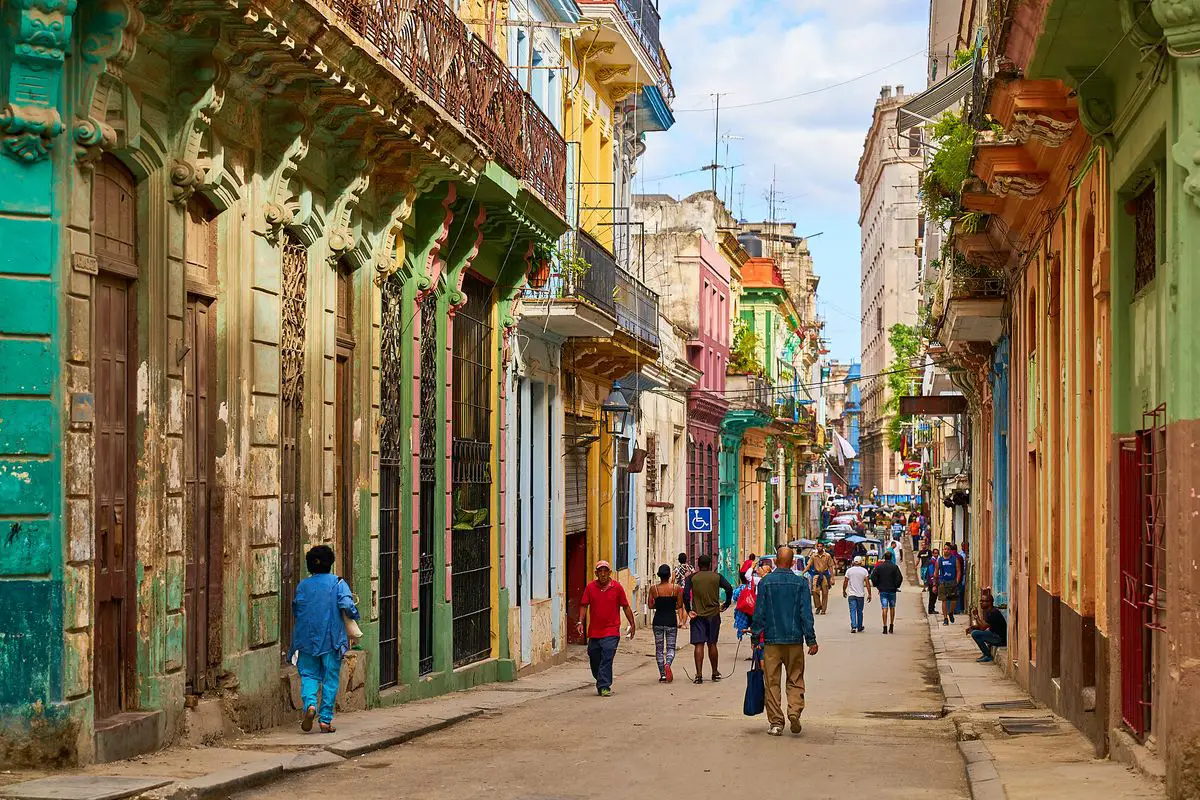
Trinidad
Sancti Spíritus
A beautiful historical center in one of the oldest cities in the Americas. The city was founded in 1514 and its center almost entirely consists of very well preserved historical buildings. The street network was developed in the 16th – 17th centuries, but current buildings were built in the 18th – 19th century.
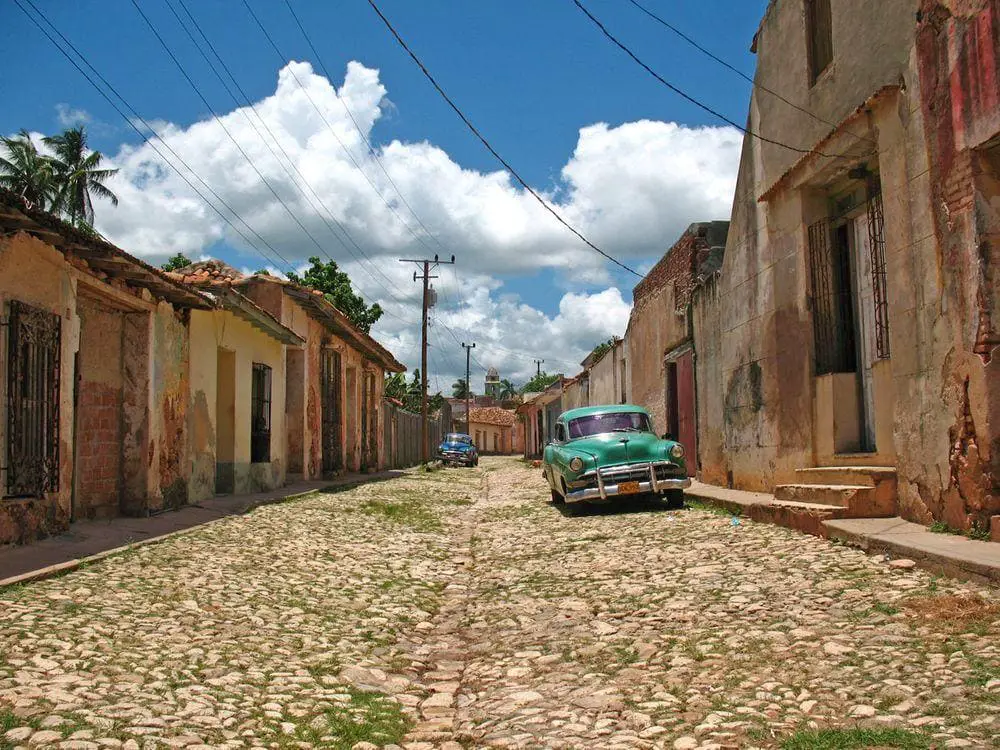
El Capitolio
La Habana
The historical seat of the Cuban Government, now – the Cuban Academy of Sciences. Built in Neo-Classicism style in 1926 – 1929. If looking superficially, it is similar to the United States Capitol. The enormous dome is 92 m high.
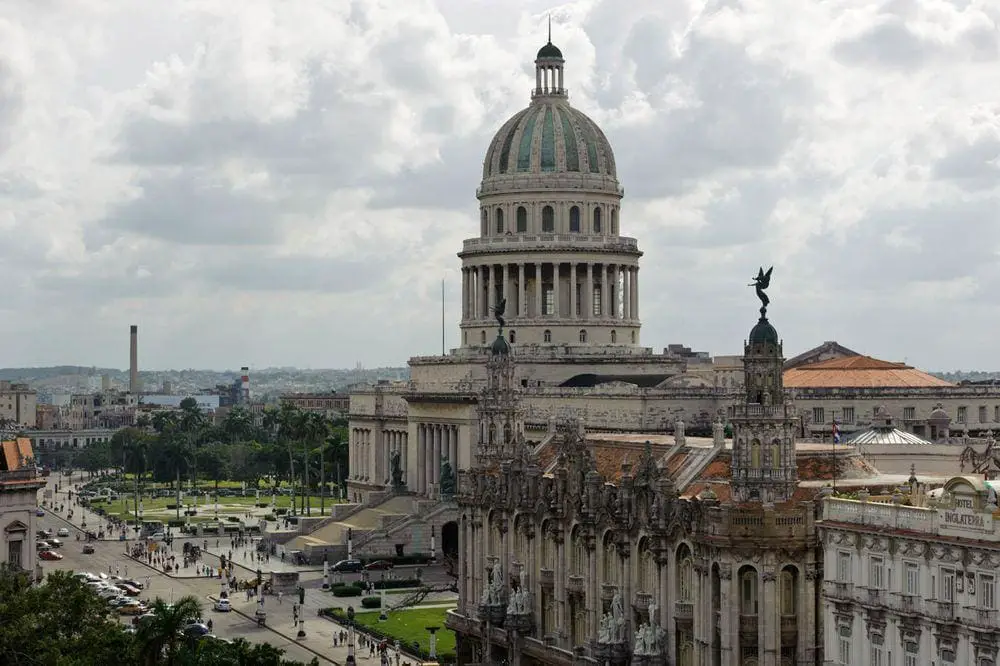
Camagüey
Camagüey
A historical city with winding alleys and authentic architecture, established in this location in 1528. The city is intentionally planned as a maze to make it hard for pirates to orientate. Numerous ornate buildings.
Castillo de la Real Fuerza
La Habana
The oldest European-built stone fortress in the Americas, built in 1558 – 1577. Important historical monument with a symbolic meaning for Cuba.
Cienfuegos
Cienfuegos
A beautiful historical city with many hundred buildings in the Neo-Classical style and many other historical buildings. With its strict grid planning, Cienfuegos is one of the best examples of the Spanish Enlightenment city planning from the early 19th century.
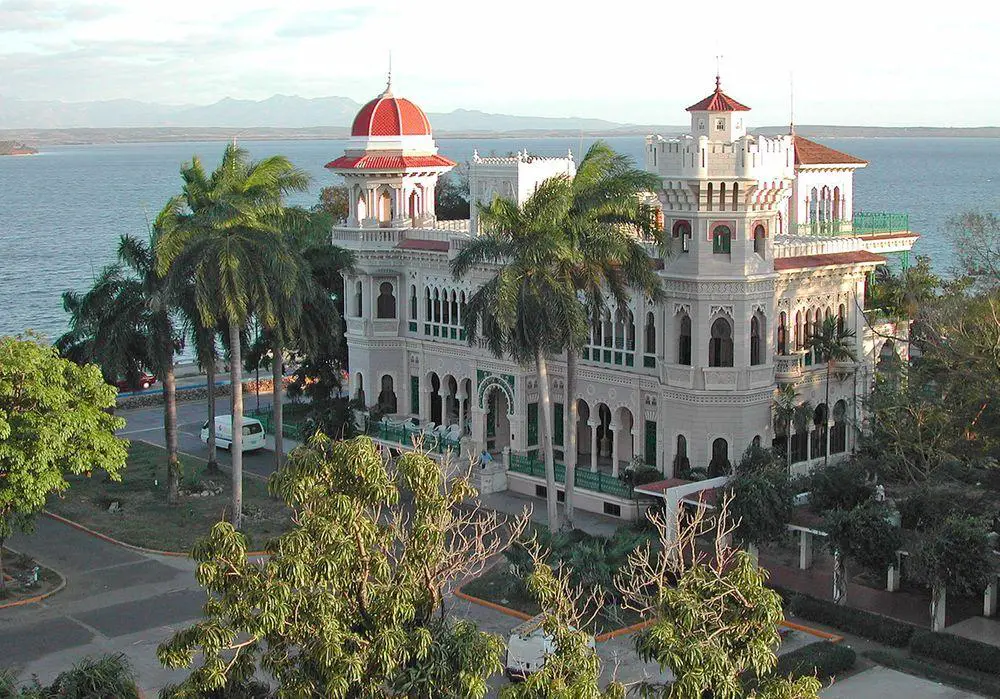
Castillo de San Pedro de la Roca
Santiago de Cuba
A very well preserved, large fortress, built in 1638 – 1700. The most complete example of Spanish-American military architecture, built in the Italian Renaissance style.
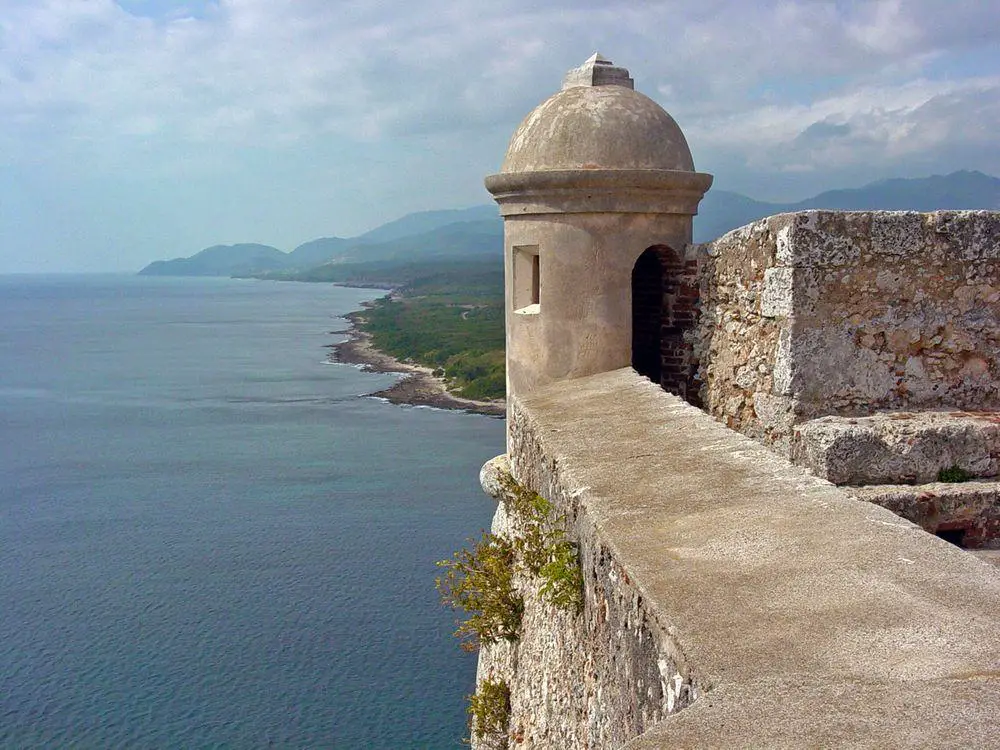
Cathedral of Havana
La Habana
A cathedral in the Baroque style. Its construction was started in 1748 as a Jesuit church, and completed in 1777 as the church for Havana. The building has a beautiful, asymmetric facade.
Museum of the Revolution
La Habana
A museum, located in the impressive, beautiful Presidential Palace, constructed in 1920.
Great Theatre of Havana
La Habana
A magnificent building in the Neo-Baroque style, built in 1915.
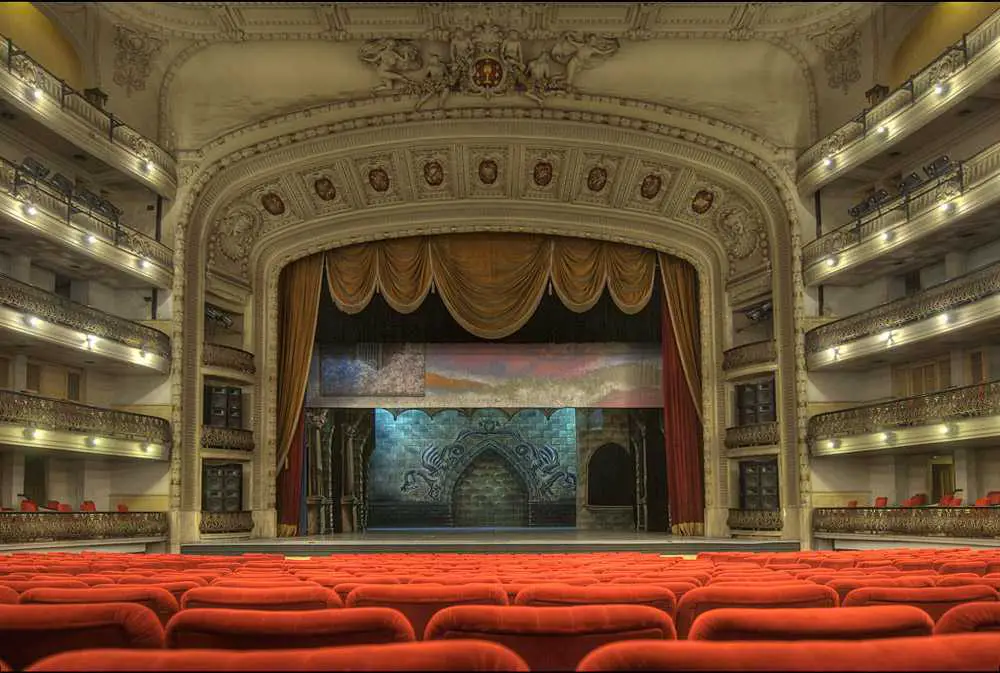
Manaca-Iznaga Tower
Sancti Spíritus
An unusual structure – a 45 m tall bell tower, built in 1816 in Manaca – Iznaga plantations. The ring of its bells marked the beginning and end of the work in sugar plantations.
 Recommended books
Recommended books
Lonely Planet Cuba
Lonely Planet Cuba is your passport to the most relevant, up-to-date advice on what to see and skip, and what hidden discoveries await you. Walk through Havana’s cobbled streets and evoke the ghosts of mega-rich sugar barons and sabre-rattling buccaneers; stay in a private homestay where you can quickly uncover the nuances of everyday Cuban life; and hop on your bike and hit the quintessentially rural Cuba in Valle de Vinales; all with your trusted travel companion. Get to the heart of Cuba and begin your journey now!
Cuba – Culture Smart!: The Essential Guide to Customs & Culture
Cuba is a land of contradictions that is easy to enjoy but difficult for first-time visitors to decipher. The largest island in the Caribbean, it is a tropical paradise that Christopher Columbus called “the most beautiful land that human eyes have ever seen.” It is famous for the romantic charm of its crumbling colonial cities, the beauty of its white-sand beaches, and its irresistible Afro-Cuban dance beats.

